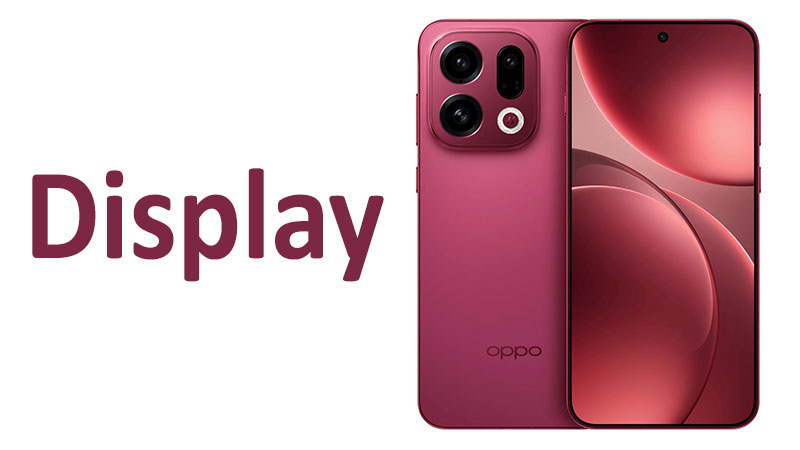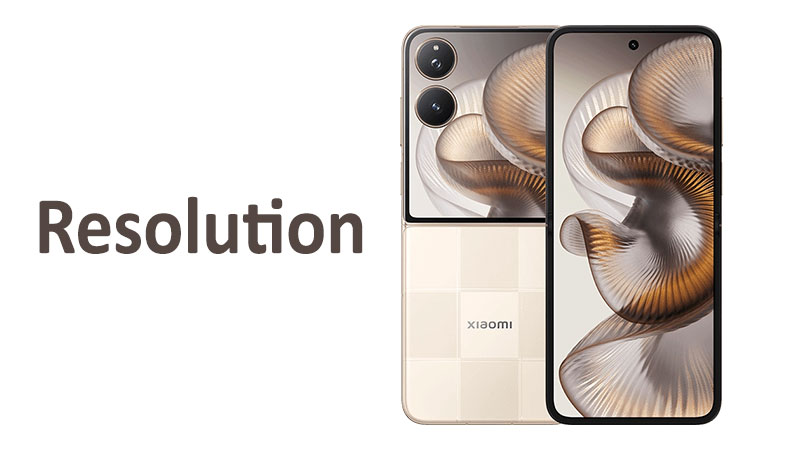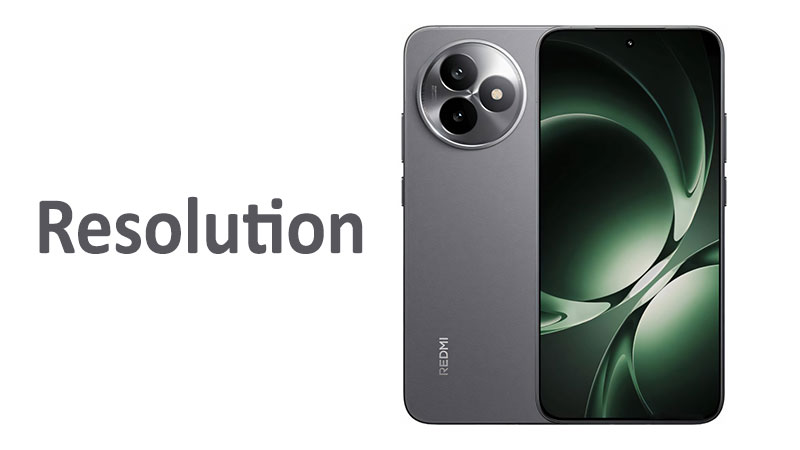The Oppo Find X9 Pro Display sets a powerful new standard for flagship visual performance. It is the single most important hardware feature influencing daily user satisfaction. Screen quality affects everything, from reading emails to streaming high-resolution movies. This comprehensive review thoroughly analyzes the complete specifications and overall quality of the Oppo Find X9 Pro’s advanced screen technology. We will investigate how its cutting-edge LTPO panel, high refresh rate, and massive brightness levels combine for a premium user experience. This detailed examination helps consumers understand the technical superiority of this device.
Detailed Display Technology Review
The Oppo Find X9 Pro display is an assembly of best-in-class visual components. It incorporates several advanced engineering choices focused on efficiency, clarity, and user comfort. Understanding these core specifications is vital for appreciating the phone’s visual capabilities. We will systematically break down each major element to provide a thorough analysis for all readers.
LTPO AMOLED Panel Technology
The Oppo Find X9 Pro utilizes an LTPO AMOLED panel. LTPO is a technology that stands for Low-Temperature Polycrystalline Oxide. This panel type is a major upgrade from traditional AMOLED screens. It offers a significant advantage in power management and display smoothness. The LTPO backplane is the engine that drives the screen’s efficiency.
The Power of Variable Refresh Rate
The key benefit of LTPO is its ability to dynamically change the refresh rate. The screen can adjust its refresh rate based on the content being shown. If you are reading static text, the display can drop its refresh rate down to just 1Hz. This minimal rate requires very little power. Conversely, when you start scrolling a web page, the rate instantly ramps up to 120Hz. This results in exceptional power savings without sacrificing performance when it is needed.
Comparison to Standard AMOLED
The previous Oppo Find X9 model used a standard AMOLED panel. That standard panel typically toggles only between 60Hz and 120Hz. The Pro model’s LTPO AMOLED is far more flexible. The ability to hit extremely low refresh rates like 1Hz or 10Hz significantly improves battery efficiency. This is crucial given the high power draw of a large, high-resolution screen. Buyers should know LTPO is the gold standard for adaptive flagship displays.
AMOLED Advantages Retained
Since it remains an AMOLED display, it inherits the benefits of OLED technology. Each pixel generates its own light. This results in perfect blacks because dark pixels are simply turned off. This self-emissive property also creates an infinite contrast ratio. The color vibrancy and deep blacks are fundamental advantages over any LCD screen. This core technology ensures brilliant visual quality in all environments.
Pros and Cons of LTPO
A major pro is the superior energy management and prolonged battery life. Another benefit is the incredibly smooth motion at 120Hz. A potential con is the slightly higher cost of manufacturing these complex LTPO displays. This increased cost is factored into the premium price of the Oppo Find X9 Pro. However, the efficiency gains offer long-term value for the user.
Size, Aspect Ratio, and Aesthetics
The Oppo Find X9 Pro features a large 6.78-inch display. This is a noticeable step up in size from the 6.59-inch panel on the non-Pro model. This generous diagonal measurement provides an expansive and highly immersive viewing surface. The total calculated screen area is approximately 112.4 cm².
Screen-to-Body Ratio and Design
The phone boasts an outstanding screen-to-body ratio of around 91.1%. This high percentage means the borders, or bezels, around the screen are extremely thin. Minimal bezels contribute to the device’s modern, sleek appearance. They also maximize the effective viewing space. This near-bezel-less design is a key element of the flagship aesthetic.
Buyer Information on Size
The 6.78-inch screen size positions the Oppo Find X9 Pro firmly in the large-phone category. This size is superb for media consumption, like high-definition video streaming. It is also excellent for gaming and multitasking. Users who prioritize media should choose this larger size. However, individuals with smaller hands may find two-handed operation necessary. The subtle curves on the display edges aid in making the device feel thinner than it is.
Aspect Ratio for Content
The display utilizes a 19.5:9 aspect ratio. This is close to the cinematic standard often used in modern movies and video content. This ratio is also beneficial for productivity tasks. It offers more vertical screen space for documents or web browsing. This design choice optimizes the viewing experience for popular media formats.
Resolution and Clarity
The Oppo Find X9 Pro features a high resolution of 1272 x 2772 pixels. This resolution delivers exceptional clarity and sharpness across all applications. This specific pixel count represents an increase over the standard model. It is designed to offer maximum detail while maintaining high rendering efficiency.
Pixel Per Inch Density
This resolution translates to a pixel density of approximately 450 pixels per inch (ppi). At 450 ppi, the display renders images with photographic quality. Individual pixels are virtually impossible to distinguish at a normal viewing distance. Text is incredibly crisp, sharp, and easy to read, even at small font sizes. This high clarity contributes significantly to a fatigue-free reading experience.
Comparing Resolution Standards
The Oppo Find X9 Pro resolution is unique, sitting above the standard 1080p Full HD+ threshold. It is often referred to as a 1.5K or 1.2K resolution by some manufacturers. This resolution offers nearly the same visual detail as a full 1440p screen. However, it requires less power from the GPU. The engineering choice provides a superb balance of visual quality and operational efficiency. The superior sharpness is evident when reviewing high-resolution images.
Clarity Pros and Cons
A significant pro is the outstanding sharpness and detail of graphics and text. The high ppi density ensures a truly premium, clear viewing surface. A minor con is that the ppi density is slightly lower than the 460 ppi found on the smaller non-Pro model. However, the difference is negligible due to the larger overall screen size. The visual experience remains stunningly detailed.
120Hz Adaptive Refresh Rate
The integrated LTPO technology enables the display’s crucial 120Hz adaptive refresh rate. The refresh rate determines how quickly the screen updates the displayed image. A 120Hz rate updates the screen 120 times every second. This high rate is the foundation for the phone’s exceptional fluidity.
Impact on Gaming and Scrolling
The 120Hz rate makes navigating the operating system feel incredibly smooth. Scrolling through endless social media feeds is buttery smooth and responsive. Gamers benefit from reduced motion blur and lower input latency. High-frame-rate mobile games run and look significantly better on this panel. The visual responsiveness immediately enhances the user interaction.
LTPO and Adaptive Efficiency
The refresh rate is not fixed at 120Hz; it adapts dynamically. It will scale down to 1Hz for static content to save power. When you initiate motion, it scales up almost instantaneously. This adaptive process is seamless and invisible to the user. It ensures that the phone uses high refresh rates only when necessary for motion. This smart system is key to maximizing battery life.
Buyer Advice on 120Hz
Buyers should always verify the 120Hz rate is enabled in the display settings for the best experience. Sometimes, phones default to a lower rate for extended battery endurance. Experiencing the full 120Hz refresh rate is critical for feeling the phone’s flagship speed. Once you use this level of smoothness, returning to a 60Hz display is difficult.
Ultra-High Brightness Performance
The Oppo Find X9 Pro achieves highly competitive brightness levels necessary for a flagship device. It offers a typical brightness of 800 nits. The High Brightness Mode (HBM) can boost this output significantly to 1800 nits. Crucially, the display is capable of reaching a spectacular 3600 nits peak brightness.
Typical and HBM Brightness
The 800 nits typical brightness is more than enough for comfortable indoor use. It provides excellent visibility in well-lit internal environments. The 1800 nits HBM is essential for outdoor usability. HBM engages automatically when the phone senses direct sunlight. This ensures the screen remains perfectly legible even under harsh, bright conditions. Sun readability is a non-issue with this advanced screen.
3600 Nits Peak Brightness Explained
The 3600 nits peak brightness is exclusively used for High Dynamic Range (HDR) content. This extreme luminance allows for massive dynamic range expression. It creates a striking contrast between the darkest and brightest parts of a scene. Highlights like specular reflections or explosions appear dazzling and lifelike. This capability is vital for providing a truly cinematic viewing experience on a mobile device.
Comparison to Competitors
The 3600 nits peak brightness is comparable to many top-tier flagship phones. It delivers a noticeable visual advantage over older devices that peaked below 2000 nits. This brightness performance ensures that the display can fully realize the potential of HDR formats. The resulting image quality is stunningly vivid and high-contrast in all supported content.
Color Depth and HDR Standards
The Oppo Find X9 Pro display is specified as a 1 Billion Color panel. This means the screen supports 10-bit color depth. This capability is significantly better than the 16.7 million colors of an 8-bit screen. The increased color information ensures professional-grade color accuracy.
Benefits of 10-Bit Color
The ability to render over a billion colors eliminates visible color banding. This is especially important in high-resolution, complex images and video footage. Gradients from one shade to another appear seamlessly smooth and natural. This color fidelity is critical for photographers and videographers using the phone for editing and reviewing content. It ensures the color representation is precise and true-to-life.
Dolby Vision, HDR10+, and HDR Vivid Support
The Oppo Find X9 Pro offers robust support for multiple premium HDR standards. It includes support for Dolby Vision, HDR10+, and HDR Vivid. Dolby Vision uses dynamic metadata to optimize the picture quality scene-by-scene. HDR10+ is a widely adopted open standard also using dynamic metadata. HDR Vivid is a unique standard, ensuring full compatibility with regional content platforms.
Comprehensive HDR Compatibility
This triple support ensures the phone can display the highest quality content from virtually any streaming service. Netflix, Amazon Prime, and others are covered by the Dolby Vision and HDR10+ standards. This broad compatibility maximizes the utility of the 3600 nits peak brightness. The resulting image quality, combining high color depth and extreme contrast, is truly spectacular.
PWM Dimming and Eye Comfort
The Oppo Find X9 Pro incorporates an ultra-high frequency 2160Hz PWM dimming solution. Pulse Width Modulation (PWM) is the method OLED screens use to control brightness. Low-frequency PWM can introduce visible flicker, leading to eye strain. The high frequency aims to solve this common OLED issue.
The 2160Hz Significance
The 2160Hz frequency is very high, moving the flicker beyond human perception. This is vital for users who are sensitive to screen flicker or use their phone for extended periods. It significantly improves comfort when using the device at low brightness levels, such as in a dark room. This feature demonstrates Oppo’s focus on the user’s long-term eye health and comfort.
Comparison to Other Models
The previous Oppo Find X9 model featured an even higher 3840Hz PWM frequency. The Pro model’s 2160Hz is still excellent and much higher than many competitors, but it is a step down from the non-Pro’s specification. Buyers should recognize the 2160Hz is still classified as “ultra-high.” It is highly effective at flicker mitigation and is superior to the PWM used in many rival flagships. However, users sensitive to flicker might note the technical difference between the X9 and X9 Pro.
Eye Health for Buyers
For buyers, the 2160Hz PWM technology is a major advantage for eye comfort. It offers peace of mind regarding potential visual fatigue from extended use. The high frequency ensures accurate color and minimal flicker, even when the screen is dimmed heavily. This makes the phone a very comfortable choice for late-night usage.
Protection: Corning Gorilla Glass
The massive 6.78-inch display of the Oppo Find X9 Pro is protected by Corning Gorilla Glass. This material is a recognized industry leader in protective glass technology. Gorilla Glass is specifically engineered to provide robust resistance against daily scratches and accidental impacts. It is a necessary feature for safeguarding such a large, premium panel.
Durability and Buyer Considerations
The use of Gorilla Glass ensures excellent defense against common hazards. This includes minor scratches from keys, coins, or other abrasive materials. Furthermore, it offers reliable resistance against damage from drops and bumps. Protecting a large flagship screen is crucial due to high potential replacement costs. This strong protection is a non-negotiable feature for durability.
Unspecified Version Details
Oppo currently does not specify the exact version of the Corning Gorilla Glass being used. However, it is reasonable to assume it is a recent and highly advanced generation. Recent versions of Gorilla Glass offer significantly improved shatter resistance compared to older alternatives. Buyers should still consider a quality case and screen protector for maximum physical safety. The base glass protection is certainly high-end and reliable.
Summarized Pros and Cons for Buyers
The Oppo Find X9 Pro display offers an exceptional range of features and technical specifications. It represents a powerful visual package. Reviewing the summarized advantages and disadvantages aids in making an informed purchasing decision.
Key Display Pros
The use of LTPO AMOLED provides industry-leading battery efficiency through adaptive refresh rates. The huge 6.78-inch size offers an extremely immersive viewing canvas. The 3600 nits peak brightness ensures spectacular HDR content playback. Excellent 10-bit color depth eliminates banding and guarantees stunning color accuracy. Broad support for Dolby Vision, HDR10+, and HDR Vivid maximizes streaming quality.
Key Display Cons
The 2160Hz PWM dimming, while ultra-high, is lower than the 3840Hz found on the non-Pro model. This is a potential point of concern for the most flicker-sensitive users. The large 6.78-inch size may pose ergonomic challenges for one-handed use. The slightly reduced ppi (450 ppi) compared to the smaller X9 (460 ppi) is a minor technical compromise for the increased size. The specific version of Corning Gorilla Glass remains undisclosed.
Conclusion: Making an Informed Choice
The Oppo Find X9 Pro display review confirms its status as a leading contender for the best smartphone screen available. The combination of the LTPO panel and a vibrant 120Hz refresh rate delivers unmatched fluidity and efficiency. The exceptional 3600 nits of peak brightness transforms HDR content viewing into a truly cinematic experience. While the PWM frequency is slightly lower than a predecessor, the 2160Hz rate is still excellent for eye comfort. Consumers prioritizing a large, efficient, and visually stunning media consumption device should strongly consider the Oppo Find X9 Pro. Its display technology is optimized for both performance and user well-being.
Frequently Asked Questions (FAQ)
1. Does the Oppo Find X9 Pro use LTPO technology?
Yes, the Oppo Find X9 Pro uses an LTPO AMOLED display. This technology allows the screen to dynamically adjust its refresh rate from 1Hz to 120Hz for maximum battery efficiency.
2. Is the 2160Hz PWM dimming frequency good for eye strain?
Yes, the 2160Hz PWM frequency is classified as ultra-high. It is designed to move screen flicker beyond human perception. This significantly improves viewing comfort in low-light environments.
3. How does the 3600 nits peak brightness benefit the user?
The 3600 nits peak brightness allows the screen to fully express High Dynamic Range (HDR) content. It creates incredible contrast and strikingly bright highlights in supported movies and videos.
4. What is the approximate pixel density of the screen?
The display has a pixel density of approximately 450 ppi. This is an extremely high density. It ensures all text and images appear exceptionally sharp and clear without visible pixels.
5. What unique HDR formats does the display support?
The display supports the three major HDR formats: Dolby Vision, HDR10+, and HDR Vivid. This broad compatibility ensures the highest visual quality across all major streaming services.



